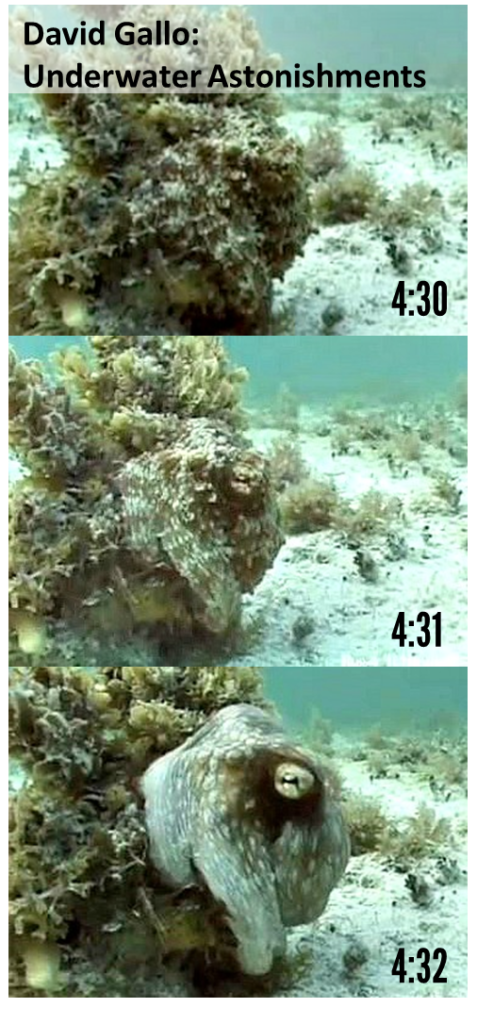This is the third in a series of 10 posts, looking at public speaking lessons from each of the top 10-most viewed TED Talks.
For five and a half minutes, I was transported to the wonder years of my childhood. Mesmerized by the biodiversity of undersea life just as I was as a child when I watched episodes of The Undersea World of Jacques Cousteau, I almost forgot I was supposed to be analyzing the talk.
David Gallo’s “Underwater Astonishments” is one of the “Talks in Less than 6 minutes” TED talks. A good talk doesn’t have to be long. In fact, the speaker doesn’t even need to be the star of the talk.
The overall construct of the speech: Narrated video. In this talk, David Gallo essentially narrated video showing some of the fascinating biodiversity of the ocean, primarily focusing on bioluminescence and cephalopods (octopus, squid, cuttlefish). Gallo was visible for a total of less than a minute, only about 16 percent of the total time. The longest stretch was about 28 seconds.
Not perfect. My only major quibble was that I didn’t know exactly what his main point was or where he was going. He just started with his first point:
“We’re going to go on a dive to the deep sea, and anyone that’s had that lovely opportunity knows that for about two and half hours on the way down, it’s a perfectly positively pitch-black world. And we used to see the most mysterious animals out the window that you couldn’t describe: these blinking lights — a world of bioluminescence, like fireflies.“
He also ended very abruptly (although it didn’t seem that odd for this talk) He made a smooth transition from the video of an octopus exhibiting camouflage:
“Just an amazing animal, it can change color and texture to match the surroundings. Watch him blend right into this algae.One, two, three. (Applause) And now he’s gone, and so am I. Thank you very much.”
What the speaker nailed:
Engaging the audience’s imagination. Right from the get-go, with “We’re going to go on a dive to the deep sea . . .” he made the audience fellow explorers. He then fascinated the audience with video of bioluminescent creatures and cephalopod coloration. The audience oohed and ahhed when he replayed, in reverse, the amazing camouflage sequence with an octopus (shown in the picture sequence above).
Conversational style. I almost felt like the speaker and I were in his living room and he was sharing his passion with me. He used short sentences. He didn’t use complicated jargon (he even briefly defined “cephalopod” as “head-foot”). His language was colorful. “Bouncing butts.” “Bingo.”
Humor. Some examples:
“Flying Turkey.”
“Cephalopods — head-foots. As a kid I knew them as calamari, mostly.“
” . . . the male has managed to split his coloration so the female only always sees the kinder gentler squid in him . . . Now I’m told that’s not just a squid phenomenon with males, but I don’t know.”
The Biggest Take-Away: If you have fascinating visuals, you can let them be the star.



Humor is always the way to go in any speeches or presentations, to grab audience interested and keep them glued to our presentation.